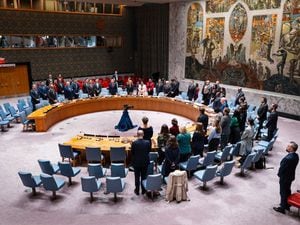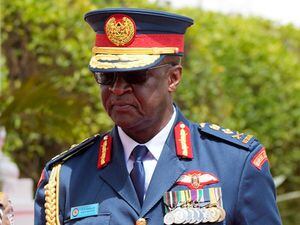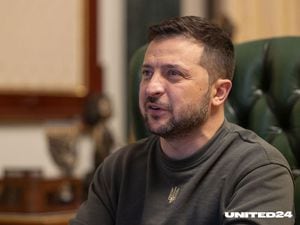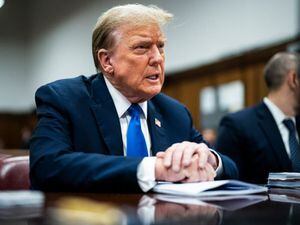Protesters storm government buildings as fury over Beirut blast fuels violence
The country’s ruling class, made up mostly of former civil war-era leaders, is being blamed for Tuesday’s explosion at the Port of Beirut.
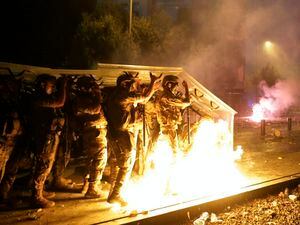
Public fury over this week’s massive explosion in Beirut took a new turn on Saturday as protesters stormed government institutions and clashed for hours with security forces, who responded with heavy volleys of tear gas and rubber bullets.
One police officer was killed and dozens of people hurt in the confrontations, which played out in streets that were wrecked from Tuesday’s blast at the port that devastated much of the city and killed nearly 160 people.
Dozens were still missing and nearly 6,000 people injured.
Activists who called for the protest set up symbolic nooses at Beirut’s Martyrs’ Square to hang politicians whose corruption and negligence they blame for the explosion.
The blast was fuelled by thousands of tons of ammonium nitrate that had been improperly stored at the port for more than six years.
Apparently set off by a fire, the explosion was by far the biggest in Lebanon’s troubled history and caused an estimated £7.6 billion-£11.5 billion in damage, according to Beirut’s governor.
It also damaged 6,200 buildings and left hundreds of thousands of people homeless.

Khodr Ghadir, 23, said the noose was for everyone who has been in power for the last 30 years. “What happened was a spark for people to return to the streets.”
A placard listed the names of the dead, printed over a photo of the blast’s enormous pink mushroom cloud. “We are here for you,” it read.
Dozens of protesters stormed the buildings of government ministries and the headquarters of the banking association, turning their rage to state and financial institutions.
Earlier Saturday, the protesters entered the empty buildings of the foreign ministry, declaring it a headquarters of their movement.

Many protesters said they now had only their homes and even those are no longer safe.
They blamed the government’s inefficiency and political division for the country ills, including the recent disaster that hit almost every home.
The violence unfolded on the eve of an international conference co-hosted by French President Emmanuel Macron and United Nations secretary-general Antonio Guterres aimed at bringing donors together to supply emergency aid and equipment to the Lebanese population.
In a televised speech Saturday evening, prime minister Hassan Diab said the only solution was to hold early elections, which he planned to propose in a draft bill.

The offer is unlikely to soothe the escalating fury on the street.
In central Beirut, some protesters threw stones at security forces, who then released heavy tear gas. Near parliament, protesters tried to jump over barriers that closed the road leading to the legislature.
The protesters later set on fire a truck that was fortifying barriers on a road leading to parliament.
At least 238 people were hurt in the clashes, and 63 of them needed to be taken to hospital, according to the Red Cross.

The country’s ruling class, made up mostly of former civil war-era leaders, is blamed for incompetence and mismanagement that contributed to Tuesday’s explosion.
“The current leaders’ bloodline needs to end. We want the death of the old Lebanon and the birth of a new one,” said Tarek, a 23-year-old university student who had prepared a mix of water and paint in a bottle to throw at the police.
No peaceful protest would bring about change, he said.
Sandy Chlela, 35, from Kousba in the north, disagreed with Tarek. She said she had no illusion that the protests would bring change, but the demonstrations were a necessary expression of anger and puts some pressure on the politicians.

The state, which is investigating the cause of the explosion, has been conspicuously absent from the ravaged streets of Beirut, with almost zero involvement in the cleanup.
Instead, teams of young volunteers with brooms have fanned out to sweep up broken glass and reopen roads.
Documents that surfaced after the blast showed that officials had been repeatedly warned for years that the presence of 2,750 tons of ammonium nitrate at the port posed a grave danger, but no one acted to remove it.
The protests came as senior officials from the Middle East and Europe visited in a show of solidarity with the tiny country that is still in shock.
The president of the European Council, Charles Michel, arrived in Beirut for a brief visit. Turkey’s vice president and the country’s foreign minister met Mr Aoun and said that Ankara was ready to help rebuild Beirut’s port and evacuate some of the wounded to Turkey for treatment.
At the site of the blast, workers continued searching for dozens of missing people.

